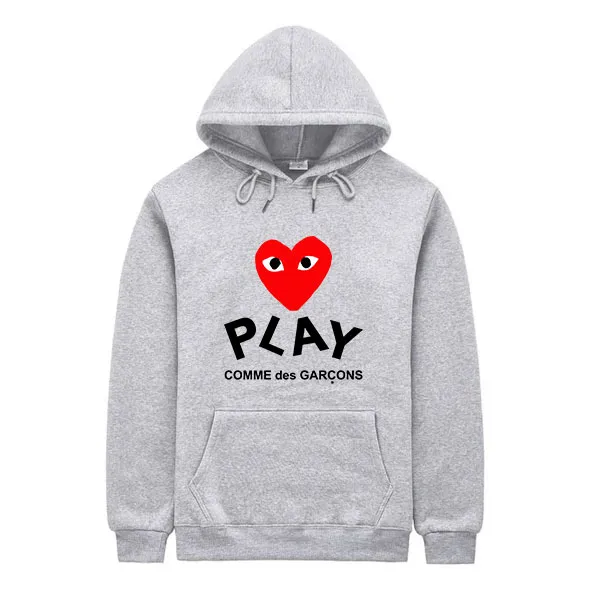Comme des Garçons, often abbreviated as CDG, is one of the most influential fashion labels in the world. Founded in 1969 by Japanese designer Rei Kawakubo, the brand has become a global symbol of avant-garde design, innovation, and artistic expression. Over the decades, Comme des Garçons has transformed from a niche experimental fashion house into a worldwide name, admired by celebrities, artists, and fashion enthusiasts alike. This article explores the origins, philosophy, product range, collaborations, and cultural impact of Comme des Garçons.
Origins and Founding Vision
Rei Kawakubo established Comme des Garçons in Tokyo in the late 1960s. The name, meaning “like boys” in French, reflects Kawakubo’s desire to challenge traditional gender roles and aesthetics in fashion. Unlike many of her contemporaries, Kawakubo was not formally trained as a designer. Instead, she approached fashion as an artist, using clothing as a medium of communication and disruption.
Her first collections in the 1970s gained attention for their monochromatic palette, deconstructed silhouettes, and rejection of conventional beauty. By the early 1980s, Comme des Garçons had made its Paris runway debut, shocking audiences with its “anti-fashion” style — oversized garments, asymmetry, unfinished hems, and a dark aesthetic. Critics initially dismissed it, but soon it became a revolutionary moment in fashion history.
Philosophy of Comme des Garçons
At its core, Comme des Garçons represents innovation, disruption, and creativity without compromise. Rei Kawakubo often states that her goal is not to make clothes for commercial purposes, but to provoke thought and emotion.
Some of the brand’s defining philosophies include:
- Deconstruction: Redefining garments by exposing seams, reworking shapes, and reinterpreting traditional tailoring.
- Gender Fluidity: Challenging the boundaries of menswear and womenswear long before it became a mainstream discussion.
- Minimalism and Maximalism: Alternating between stripped-down designs and extravagant, sculptural pieces.
- Art as Fashion: Each runway show is conceptual, often blurring the line between clothing and performance art.
Expansion and Sub-Labels
Comme des Garçons is not just a single brand but an entire universe of sub-labels and lines. Each carries its own identity while reflecting Kawakubo’s vision. comme-des-garcons.uk
- Comme des Garçons Homme: Focused on menswear with experimental tailoring.
- Comme des Garçons Play: Launched in 2002, this is the brand’s most commercial and widely recognized line, known for its minimalist designs and the iconic heart logo designed by artist Filip Pagowski.
- Comme des Garçons SHIRT: A line centered on reimagining the classic shirt.
- Comme des Garçons Black: A more affordable line featuring monochrome basics.
- Comme des Garçons Parfums: A fragrance line offering unique, unisex scents.
This diversity allows Comme des Garçons to reach both luxury consumers and mainstream audiences without compromising its artistic core.
Iconic Collaborations
Comme des Garçons has been a pioneer in fashion collaborations, partnering with both luxury brands and mass-market retailers. These collaborations have helped broaden its influence while maintaining its credibility.
Some of the most notable collaborations include:
- Nike: The brand has released several limited-edition sneakers, often deconstructed or uniquely styled.
- Converse: The Comme des Garçons Play x Converse Chuck Taylor sneakers are among the most popular items, recognized worldwide by the red heart logo.
- Supreme: The collaboration merged streetwear with avant-garde fashion, making Comme des Garçons relevant in youth culture.
- H&M: In 2008, the brand partnered with H&M for a capsule collection, bringing its experimental designs to a wider audience.
These partnerships demonstrate how Comme des Garçons bridges the gap between high fashion and street culture, influencing multiple demographics.
Cultural Impact
Comme des Garçons is more than just a fashion label; it is a cultural movement. Celebrities such as Rihanna, Kanye West, and Pharrell Williams have been spotted wearing its pieces. In addition, CDG’s sneaker collaborations have become status symbols among younger generations.
The brand’s conceptual runway shows have influenced countless designers, proving that fashion can exist beyond commerce as a form of art and social commentary. Rei Kawakubo herself has been recognized globally, including receiving the Council of Fashion Designers of America (CFDA) International Award and being the subject of the 2017 Metropolitan Museum of Art’s Costume Institute exhibition, “Rei Kawakubo/Comme des Garçons: Art of the In-Between.”
Shopping Comme des Garçons
Comme des Garçons products are sold through flagship stores, luxury retailers, and select online platforms. The brand has flagship stores in Tokyo, Paris, London, and New York, each designed as artistic spaces rather than typical boutiques.
For those new to the brand, the Play line offers accessible entry points like t-shirts, hoodies, and sneakers, while more seasoned collectors often seek limited-edition runway pieces and perfumes. Prices vary depending on the line, with CDG Play sneakers being relatively affordable compared to runway items that can cost thousands of dollars.
Conclusion
Comme des Garçons is a brand that continues to defy expectations and reshape the fashion landscape. From Rei Kawakubo’s revolutionary designs in the 1970s to the global collaborations that dominate today’s market, the label has maintained its identity as a symbol of creativity, rebellion, and innovation.
In an industry often driven by trends and profit, Comme des Garçons stands out for staying true to its mission: fashion as an art form and cultural dialogue. Whether through a heart-logo t-shirt, a deconstructed coat, or a conceptual runway show, Comme des Garçons remains one of the most powerful forces in global fashion.

